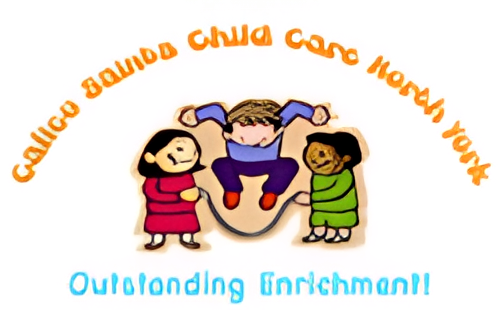Introduction to Integrated Learning Support for Modern Education
Integrated Learning Support (ILS) isn’t just another educational buzzword; it’s a crucial approach that’s reshaping how we think about teaching and learning. In essence, it combines various strategies, technologies, and resources to provide a more holistic, personalized education experience for every student. Gone are the days when learning was confined to textbooks and the classroom. Today’s learners need more – they thrive on interaction, digital tools, real-world connections, and support that goes beyond academic subjects. ILS meets these needs head-on by weaving together academic support, emotional guidance, and technological resources. It paves the way for a learning environment where every student, regardless of their starting point, can find the tools and support necessary to succeed not just academically but in life beyond the classroom. So, when we talk about creating a future-ready child, integrating learning support isn’t just an option; it’s essential. Through this approach, students learn how to learn, becoming adaptable, critical thinkers equipped to navigate the challenges of the 21st-century world.
The Importance of Preparing Children for the Future
In today’s fast-paced world, preparing children for the future is more crucial than ever. It’s not just about reading, writing, and arithmetic anymore. The future demands a blend of hard skills, like science and math, with soft skills such as communication, empathy, and problem-solving. This is where integrated learning support systems come in. They merge traditional education with these essential life skills, ensuring kids aren’t just book-smart but are well-rounded and ready for whatever comes their way. It’s about giving them a toolkit for life, not just for school tests. These systems encourage kids to think critically, adapt to changes, and collaborate with others, laying a strong foundation for their personal and professional futures. So, when we talk about preparing our children for what’s ahead, it’s about equipping them with the ability to navigate a complex world, making sure they’re not just surviving but thriving.
How Learning Support Enhances Educational Outcomes
When we talk about shaping a kid’s future, integrating learning support systems into their education is like hitting the jackpot. It’s straightforward – when kids have access to personalized support, they do better. Think of learning support as a toolbox. Each tool inside is designed to meet specific educational needs, making learning more accessible and engaging. This means kids who might struggle with traditional teaching methods can find their rhythm and thrive. The impact? Grades go up. But it’s not just about grades. Kids develop a love for learning because they’re not constantly hitting roadblocks. They become problem-solvers, thinkers, and doers. Confidence skyrockets because they see their own progress. So, you see, integrating learning support isn’t just adding a bonus feature to education. It’s about building a solid foundation that leads to undeniable success across the board.
Types of Learning Support Systems Available
In today’s educational landscape, several types of learning support systems stand out, making the journey of creating a future-ready child more effective and engaging. First off, we’ve got Personalized Learning Platforms. These tools adapt to each student’s pace and style of learning, offering tailored assignments and feedback to match their unique needs. Think of it as having a digital tutor that understands exactly what your child needs to thrive.
Next up are Collaborative Learning Tools. These platforms encourage students to work together on projects and assignments, fostering teamwork and communication skills essential for tomorrow’s world. It’s like turning group projects into a digital, interactive experience that students can enjoy from anywhere.
Then, there’s the world of Educational Apps and Games. Learning doesn’t have to be boring. These apps make it fun by turning lessons into games and challenges that keep kids engaged and eager to learn more. Imagine learning math by saving the world or tackling spelling in order to unlock new levels.
Learning Management Systems (LMS) cannot be overlooked. These systems allow teachers and educators to create, manage, and deliver content, track student progress, and personalize learning experiences. It’s like having a digital classroom that’s accessible 24⁄7, ensuring learning never stops.
Lastly, we have Adaptive Assessment Tools. These tools help evaluate students’ understanding and knowledge in real-time, adjusting the difficulty based on their performance. It’s a way to ensure that tests and quizzes are fair, challenging each student just enough to push them forward without overwhelming them.
These learning support systems are designed not just to support academic growth but also to foster the skills needed in the rapidly changing modern world. With these tools, creating a future-ready child is more achievable than ever.
The Role of Technology in Integrated Learning Support
Technology is the backbone of integrated learning support systems, making education more flexible and accessible for every child. Think of it as having a powerful toolbox where each tool serves a unique purpose in building your child’s future. From interactive learning apps that make math and reading fun, to online resources that offer limitless information at the click of a button, technology bridges the gap between traditional teaching methods and the digital world our children inhabit. Virtual classrooms allow students to learn from anywhere, breaking down geographical barriers and providing opportunities for collaborative learning with peers across the globe. Moreover, adaptive learning software intelligently adjusts to each child’s learning pace, ensuring they grasp concepts before moving on. This personalized approach is crucial, as every child learns differently. By leveraging technology in education, we’re not just preparing kids for tests; we’re preparing them for life in a digital world.
Strategies for Implementing Learning Support at Home
Integrating learning support at home isn’t tough. Start by identifying what your child needs. They might struggle with reading but excel in math. Focus on their weaknesses without ignoring their strengths. Create a routine. Kids thrive on routine. It simplifies their day and sets clear expectations. Mix academic tasks with physical activities to keep it balanced. Use resources wisely. The internet is full of free educational tools. Apps, websites, and online tutorials can support your child’s learning journey. Keep it engaging. Learning shouldn’t be a chore. Use games, exciting projects, and real-world applications to keep their interest alive. Communication is key. Talk to your child’s teachers often. They can offer valuable insights and additional resources for learning support. Remember, you’re not alone. Many parents are navigating the same challenges. Share tips and successes with your community. Every child can thrive with the right support and a little patience.
Collaborating with Schools for Effective Learning Support
When it comes to preparing your child for the future, working hand in hand with their school is key, especially if they need learning support. Schools have resources and experts who understand how children learn best. But here’s the kicker – it’s not a one-size-fits-all situation. Every child is unique, and their learning path should be too. Teachers and support staff can help identify what works best for your child, making the learning experience more effective and enjoyable. This could mean extra time with certain subjects, specialized tools, or even adapting teaching methods. The goal? To ensure no child is left behind and everyone can thrive. Remember, it’s a team effort. You, your child, and their school, working together, can make a huge difference. Let the school know you’re keen on collaborating. After all, it’s about making learning a positive journey for your child.
Case Studies: Success Stories of Integrated Learning Support
Parents and educators constantly search for methods that make learning effective and engaging. Integrated learning support systems have been a game-changer in this search. Let’s dive into some success stories. First off, there’s Jamie. Struggling with traditional learning methods, Jamie’s grades and confidence were low. After her school implemented an integrated learning system that combined interactive software with personalized teaching, Jamie’s interest in learning skyrocketed. In just six months, her grades improved significantly, demonstrating how technology combined with the right support can turn things around. Then, there’s the case of a small rural school that faced challenges due to limited resources and teachers. Introducing an integrated learning system transformed the educational experience, making learning more accessible and fun. Students could learn at their pace, and teachers had more time to focus on individual needs. Test scores in this school improved by 40% within a year. Lastly, consider Max, a child with learning disabilities. Traditional classrooms made him feel left out. However, with an integrated system that tailored learning materials to his unique needs, Max became an active participant in the classroom. His improvement was not just academic; his social skills and self-esteem also blossomed. These stories prove that when learning is made engaging and tailored to individual needs, children not only learn better but also develop a love for learning. Integrated learning support systems are paving the way for a future where every child can succeed, regardless of their starting point.
Overcoming Challenges in Adopting Learning Support Systems
Adopting learning support systems seems tough at first. It’s like learning to ride a bike – tricky at the start but smooth once you get the hang of it. Firstly, schools and parents might worry about the cost. Quality learning systems aren’t cheap, but think of it as investing in a child’s future. Next comes the tech hurdle. Not everyone’s a tech wizard, and that’s okay. Simple training sessions can turn skeptics into believers. Then there’s the big one – resistance to change. It’s human to stick to the old ways, but remember, adapting is key to growth. By tackling these challenges head-on, we pave the way for kids who are not just smart, but future-ready.
Conclusion: The Path to Creating a Future-Ready Child
In wrapping up, the journey to nurturing a future-ready child is a mix of embracing integrated learning support systems and understanding your child’s unique needs. It’s about more than just academic excellence; it involves fostering creativity, critical thinking, and adaptability. To get there, encourage exploration in different areas, from tech to arts, and support them in facing challenges rather than avoiding them. Remember, your role as a guide is crucial. Equip them not just with knowledge, but also with the resilience and open-mindedness needed in an ever-changing world. In short, it’s your support and their willingness to learn that combines to set the foundation for a future-ready child.





